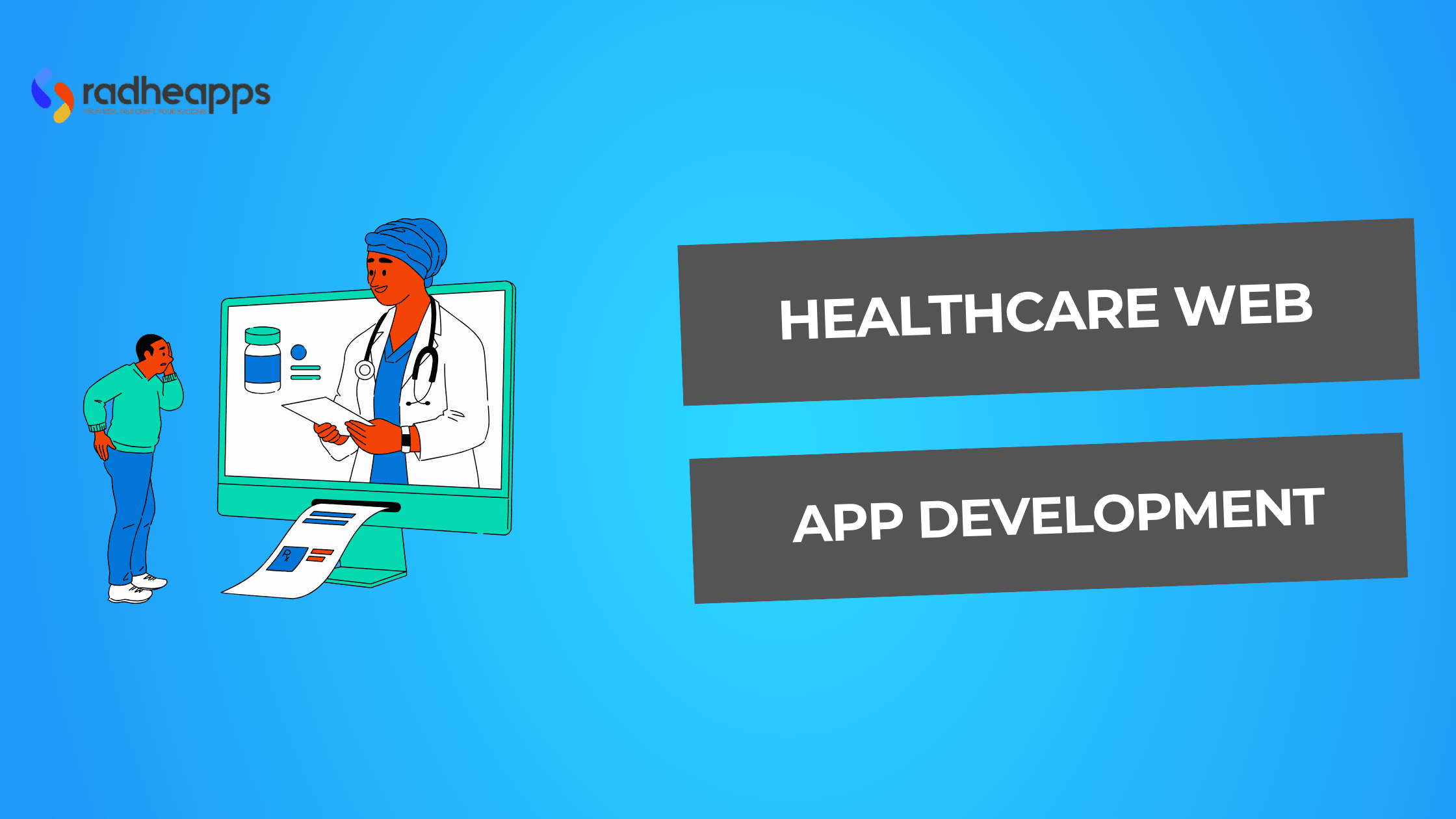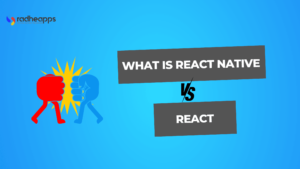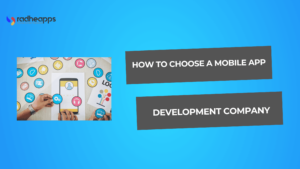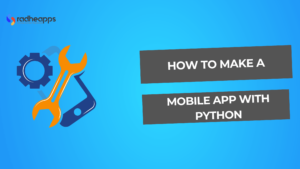As technology emerges in the medical industry, healthcare applications have changed how patients and physicians communicate. Healthcare Web App Development solutions increase accessibility and quality in health-related apps with improved virtual meetings and real-time monitoring.
But what makes a healthcare app effective and successful? A thriving healthcare app offers more than services. It must be secure, user-friendly, and integrated with existing healthcare systems.
With high concerns about security and experience, applications should comply with data privacy and HIPAA, GDPR, and other regulatory requirements for health-related apps.
These regulations will protect sensitive patient data and create a secure and intuitive app for patients and healthcare administrators. Moreover, seamless integration with EHR systems, wearable devices, and telehealth applications will improve patient management efficiency and accuracy.
So, how can you develop a practical healthcare application integrated with all compulsory features and services? From selecting the right tools for your app to complying with all the security guidelines, RadheApps has all possible solutions for your emerging and competitive healthcare application.
Whether you’re designing a telemedicine platform, fitness tracker app, or EHR patient management app, we develop secure, scalable, and functional performance. Our developers are experts in Flutter, React, and React Native app development tools.
We ensure compliance and user experience while directly integrating your solutions with health-related apps. We can design a more thoughtful, safer, and effective health-related app.
Contact RadheApps today to make your idea real!
Or
Book a consultation to create a structured roadmap for your project.
What is the Importance of Healthcare Apps
Technology has transformed every aspect of our lives, even our healthcare industry. With promising digital solutions, healthcare applications significantly improve accessibility, efficiency, and patient outcomes.
Like other technological advancements, healthcare applications create bridges between patients and medical professionals. Technology provides real-time solutions that streamline healthcare services.
How Technology is Transforming Healthcare
Technology in health care has transformed patient care, diagnostics, and health care administration. Some examples are:
- Online Consultation: Patients can now see a doctor from home, reducing wait time and increasing accessibility.
- Wearable Health Tech: A smartwatch or fitness tracker can help monitor a person’s heart rate, blood pressure, and activity level. This empowers individuals to track their health regularly.
- Electronic Health Records (EHRs): Digital records have improved data collection by simplifying processes and efficiently transferring data between patients and doctors.
- Pharmaceutical & Medication Management: Healthcare applications ensure proper medication reminders and help to avoid possible prescription errors.
Key Benefits for Patients, Doctors, and Administrators
For Patients
- Convenience & Accessibility: Patients can schedule appointments at home and consult with doctors virtually without unnecessary hospital visits.
- Health Monitoring: There are some apps that continuously track vital signs, fitness levels, and cardiac conditions.
For Doctors
- Patient Management: Apps help manage patient records, medical histories, and prescriptions quickly at their end.
- Faster & More Accurate Diagnoses: Some advanced AI-powered tools assist doctors in detecting diseases based on their symptoms.
For Administrators
- Streamlined Operations: It becomes easier to schedule, bill, and manage inventory digitally to improve hospital efficiency.
- Data Security & Compliance: Healthcare apps ensure compliance with industry regulations while securing patient data.
- Cost Reduction: These tools help manage resources, and automation reduces administrative expenses.
Market Growth and Trends in Healthcare Applications
The tech industry in the healthcare market is transforming rapidly. Some of the key trends include:
- Rise of AI & Machine Learning: Personalized and improved diagnostics through advanced algorithms. Read our comprehensive guide on the role of AI in app development.
- Expansion of Online Health Services: Virtual care through online one-on-one sessions reduces the burden on hospitals and clinics.
- Blockchain for Data Security: Secure data-sharing mechanisms are being integrated to protect patient information.
Types of Healthcare Apps and Their Use Cases
Healthcare apps can be categorized into patient-focused solutions catering to different medical industry needs.
Patient-Focused Apps
These apps empower individuals to monitor their health by providing their medical reports, health tracking, and medication management.
Telemedicine and Virtual Consultations
Telemedicine apps allow patients to connect with healthcare providers remotely to reduce the need for in-person visits. They provide real-time video consultations with doctors and medications via E-prescriptions. Highly enabled AI-powered systems assess health conditions.
Health Tracking and Fitness Apps
These apps monitor the user’s fitness, heart rate, sleep, and overall wellness by tracking steps and calories to achieve fitness goals. Many wearable devices like Apple Watch and Fitbit have health-tracking integrations that allow real-time monitoring.
Medication Reminders and Prescription Management
These apps ensure patients take their medications on time through automated reminders and notifications. They also provide prescription refill tracking, pharmacy integration, and vital drug interaction warnings to prevent side effects.
Healthcare Provider Solutions
These apps help hospitals, clinics, and healthcare experts to streamline operations and enhance patient care.
Electronic Health Records (EHR) and Management Systems
EHR apps centralize patient data to make it accessible to healthcare experts. They help to track patient history for more informed diagnoses by secure document sharing between hospitals and specialists. Cloud-based data storage offers real-time access from multiple locations.
Medical Imaging and Diagnostics Applications
These apps utilize AI and cloud computing to improve the accuracy of medical imaging. They help streamline diagnostics by enabling in-depth analysis of X-rays, MRIs, and CT scans from a remote location. This enables faster disease detection using deep learning models.
Workflow Automation and Patient Management
These apps automate hospital workflows to alleviate administrative burdens and enhance efficiency. AI-powered appointment scheduling minimizes wait times. Automated billing and insurance claim processing streamline operations. Real-time patient tracking in hospitals enhances care coordination.
Essential Features of a Successful Healthcare App
A thriving healthcare app must have high-end security and seamlessly integrate with existing healthcare systems. To provide effective healthcare solutions, ensure security compliance, and design an intuitive interface.
Data Security and Compliance
- HIPAA, GDPR, and Regulatory Requirements: Because healthcare apps store sensitive and personal information of patients. It is crucial to maintain all data protection laws and security compliance to prevent data hacks and legal issues.
- Implement Encryption and Secure Authentication: End-to-end encryption of patient data is vital to prevent unauthorized access. For secure access, implement two-factor authentication and biometric login.
User Experience and Accessibility
- Design Intuitive and Easy-to-Use Interfaces: A healthcare app must have interactive features, simplified navigation, and clear icons to improve engagement. Improve visibility for visually impaired patients.
- Ensure Accessibility for All Patients and Providers: The healthcare app should be accessible to people with disabilities. Voice commands and screen-reading features should be incorporated.
Integration with Healthcare Systems
- Connect with Hospital Databases and Wearables: Add features to collect data from wearables and sync it with hospital accessibility to monitor health metrics regularly.
- API Integrations for Seamless Interoperability: Engage with insurance providers, pharmacies, and telehealth platforms. Health devices integrate with hospital databases and wearable devices for real-time health tracking.
Challenges in Healthcare App Development and How to Overcome Them
A healthcare app can face various challenges including security breaches or a lack of storage. You can deliver a safe and user-friendly application by following structured guidelines.
| Challenge | Description | Solution |
| Ensuring Patient Data Privacy and Security | Healthcare apps handle sensitive patient information, with a high chance of a data breach. | Use end-to-end encryption for data transmission and implement multi-factor authentication by following HIPAA/GDPR compliance. |
| Navigating Complex Regulations and Compliance | Healthcare regulations vary across regions. Non-compliance can lead to legal issues. | Work with legal consultants who are familiar with healthcare laws. |
| Building Scalable and Reliable App Architecture | Healthcare apps should be able to handle high data volumes and support real-time operations like patient monitoring. | Integrate with cloud-based solutions such as AWS or Google Cloud for scalability.
Implement load balancing to manage high traffic. |
Developers can build robust healthcare solutions and streamline medical workflows by prioritizing security, understanding regulations, and leveraging emerging tech.
Steps to Develop a Healthcare App From Scratch
To develop a healthcare app requires careful planning and a strong development strategy. This guide outlines the key steps to build a successful healthcare app.
Identify the Target Audience and App Purpose
Before developing an application, you should have a clear idea about:
- Purpose of the App: You should clearly plan the services list that your app will provide. Services such as appointment booking, online consultation, or medication support.
- Value It Does Offer: A well-structured application aims to add value to the customer’s life by conveniently providing better diagnoses for specific healthcare needs.
Conduct Market Research and Competitor Analysis
You should conduct deep market research and competitor case studies before launching your app. Include these steps:
- Leading Healthcare App Analysis: Conduct thorough research on competitors’ applications and identify their strengths and weaknesses.
- Evaluate Industry’s Trend: Keep updated on how AI integrates into the healthcare market for telehealth growth.
Define Core Features and Functionalities
Essential features and functionalities that are common but compulsory to include:
For Patient-Centric Apps
- User registration and profile management.
- Appointment booking and online consultation.
- Health monitoring and wearable device compatibility.
- Chat feature with doctors.
- Prescription & medication reminders.
For Doctor & Hospital Apps
- Patient record management.
- AI-assisted diagnostics.
- Data analytics for medical insights.
- Prioritize security compliance to protect patient data.
Choose the Right Technology Stack
It is crucial to select an app development framework that works best for your project.
Frontend for User Interface
- React Native or Flutter: Choose React Native or Flutter for the best cross-platform application development.
- Swift or Kotlin: Best for native app development.
| Learn what to choose between React and the React Native app development framework. |
Backend for Data Processing
- For API: Use Node.js / Django / Ruby on Rails to handle API requests.
- Data Storage: Use MongoDB / PostgreSQL / Firebase for secure data storage.
Security & Compliance
- OAuth 2.0 / JWT: For authentication.
- End-to-end encryption: To protect sensitive medical data.
Design and Prototype the User Interface
A user-friendly and accessible UX with interactive UI is essential for apps.
- Focus on Simplicity: Avoid cluttered layouts and design an intuitive interface.
- Use Medical Themes: Add blue, white, and green colors for trust and professionalism.
- Ensure Accessibility: Large tapable buttons, voice commands, and text-to-speech for elders.
- Create Wireframes & Prototypes: Tools like Figma help visualize app workflow.
Develop The Backend and Frontend
- Frontend: It is essential to build a responsive and interactive user interface.
- Backend: Setting up databases, APIs, and cloud services to manage users’ data effectively.
- Security Measures: Data encryption, secure login, and compliance integration are vital for healthcare applications.
Test For Security, Performance, and Usability
A healthcare app must be well-optimized, secure, and user-friendly.
- Security Testing: It is vital to ensure any security guidelines or compliance with HIPAA, GDPR, and FDA regulations.
- Performance Testing: Optimize speed, load times, and responsiveness.
- Usability Testing: Conduct beta testing with real users for feedback.
Launch and Market the App Effectively
A strong marketing strategy while launching is crucial for better user engagement.
- App Store Optimization: Optimize titles, descriptions, and keywords for visibility.
- Doctor Partnerships: Promote the app by collaborating with healthcare professionals.
- Content Marketing: Share blogs, news, articles, and testimonials to engage potential users.
- Paid Advertising: Run Google Ads and social media campaigns for targeted reach.
Future Trends in Healthcare App Development
The healthcare industry is transforming digitally. It is pivotal in improving patient care and streamlining operations. Emerging technologies like AI, machine learning, and remote patient monitoring (RPM) are redefining healthcare apps’ functions.
AI and Machine Learning in Medical Diagnostics
- AI-Enabled Diagnostics: AI tools can analyze X-rays, MRIs, and CT scans. These help detect diseases at an early stage.
- Chatbots & Virtual Assistants: AI-enabled chatbots can provide instant medical advice.
- Predictive Analytics for Disease Prevention: Machine learning algorithms can predict potential health risks.
Blockchain for Secure Patient Data Management
- Secured Data Storage: Patient records are stored securely reducing the risk of data breaches.
- Patient-Controlled Health Records: Blockchain allows patients to share their medical data securely with doctors.
- Fraud Prevention & Transparency: Every transaction is time-stamped and immutable to prevent unauthorized access or fraud.
- Smart Contracts for Medical Transactions: Blockchain-based smart contracts automate insurance claims and billing to reduce paperwork.
The Rise of Remote Patient Monitoring (RPM)
- Wearable Health Devices Integration: Smartwatches, glucose monitors, and Electrocardiograms (ECGs) provide health data to doctors.
- Telehealth and Virtual Care: Virtual meetings allow users to manage chronic diseases such as diabetes, hypertension, and cardiac disease.
- IoT Enable Smart Healthcare: IoT devices may replace or supplement hospital or clinical monitoring and provide health information for proactive monitoring.
- AI-Enabled Alerts & Notifications: Remote Patient Monitoring (RPM) applications can continue to monitor vital signs.
Advantages of RPM for Patients and Healthcare
- Early Disease Detection: Continuous monitoring will assist in determining health vulnerabilities before a health crisis occurs.
- Decrease in Hospitalizations: Providing patients the option to receive care at home alleviates the burden on hospital capacity.
- Enhanced Care for Chronic Patients: Patients with chronic conditions, such as diabetes, hypertension, or respiratory conditions, will receive modified, adapted care plans.
Conclusion
The healthcare sector is experiencing a digital transformation, and mobile applications are the main reason for this transformation. A thriving healthcare application is more than just a convenience. It becomes a lifeline for patients, a substantial component for doctors, and an efficiency-driven tool for administrators.
By focusing on the importance of data security, intuitive user experience, and seamless systems integration. Healthcare providers can improve patient care, optimize operations, and compete more effectively in the marketplace.
However, successful healthcare applications are built on security, compliance, and user-friendly interfaces. RadheApps, with expertise in deep industry contextual challenges and opportunities, stands out in providing cutting-edge technology.
At RadheApps, we build custom healthcare applications that combine cutting-edge technology, regulatory compliance, and experiential design solutions. From creating telemedicine platforms, remote patient monitoring, or EHR solutions.
We aim to create your app with scalable, security-guideline solutions focused on business opportunities. Together, we shape the future of healthcare!
Get started with RadheApps now, and turn your healthcare application ideas into action.
Frequently Asked Questions (FAQs):
How do Healthcare Apps Improve Patient Care?
Digital health uses digital tools and platforms to improve healthcare outcomes by providing personalized patient care in person. It also expands access to healthcare through mobile apps or neural networks for diagnosing diseases.
What are the Most Significant Security Concerns in Healthcare Applications?
Significant security concerns in healthcare applications include data breaches, ransomware attacks, insider threats, phishing attempts, and the security of medical devices.
How much does it Cost to Develop a Healthcare App?
The cost of developing a healthcare app can be based on the technology used, the app’s functionality, design, and post-launch support. The essential cost of healthcare app development can range between $50,000 to $100,000.
What is the Best Way to Ensure Compliance with Healthcare Regulations?
Some standard healthcare compliance regulations include the Health Insurance Portability and Accountability Act (HIPAA) for patient privacy.




